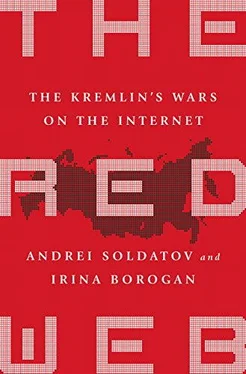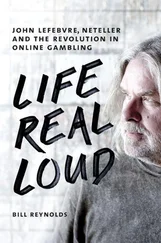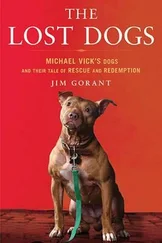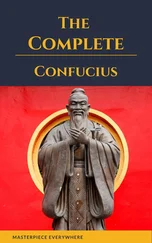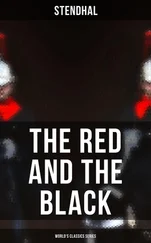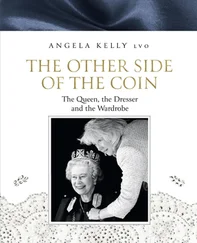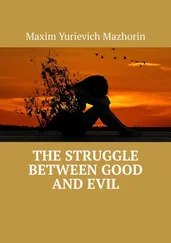The presidential elections were set for March 4, 2012. The opposition called for demonstrations, and although some were held, they seemed to be losing momentum. The opposition had no candidate for the presidential elections, but this was only part of the problem. However much the United Russia party was unpopular and fraud was used on its behalf during the parliamentary elections, Putin personally was popular—the most popular politician in the country. The Kremlin wanted and expected to be able to secure a fair victory, so there was no point in mobilizing protesters to join as election observers, as was the case in December. The video cameras Putin had promised were duly installed at polling stations all over the country.
On the night of elections Navalny was based at a club, Masterskaya, the same place where, four months earlier, Grigory Okhotin had launched the OVD-Info website. [15] The Masterskaya club is owned by a prominent family, Paperny, famous among the Moscow liberal intelligentsia.
When we arrived that evening it was already dark outside. Putin had won election to a third term on the first ballot by 63.6 percent. On our way to the club we passed by groups of drunk strangers clearly unfamiliar with Moscow’s streets, probably heading to Putin’s victory rally near the Kremlin. It was known that pro-Kremlin movements bussed people from the regions to the city to cheer their winner.
At the first floor of Masterskaya two muscled and forbidding guards dressed in black stood, their arms crossed over their chests. When we said we were journalists from Agentura.ru, they waved us in, to the second floor. Masterskaya occupied a building of the former Soviet public baths and had two large rooms with high ceilings on the second floor, previously the baths for women and men. On this night one of the rooms was for Navalny’s personal use, and the second was filled with journalists and activists; nearby a small theater hall had been turned into a makeshift television studio. The mood was downbeat. Navalny avoided answering questions from journalists that evening and just issued brief statements.
Barely two hundred meters from the club Putin took to the outdoor stage near the Kremlin to savor his triumph. He started thanking the cheering crowds for support, and a tear appeared in his eye.
The next morning came a new type of cyber attack. According to the Internet security firm Symantec, experts suddenly identified a surge of spam e-mails, widely disseminated. The messages seemed to be promoting a rally against Putin, but they were also carrying malware, disguised as an attachment. The body of the e-mail had just one sentence, indicating the attached document: “Instructions for your actions in the rally against Putin.”
Symantec detected the malicious document as a Trojan, a disguised weapon. In this case the attachment contained malicious macros that dropped onto the user’s computer and loaded a hidden piece of software, called Trojan.Gen. It then would overwrite any files with the common extensions of .doc or .exe or .zip. Once it had destroyed all such files, the software would run code to cause the computer to crash.
The attack, however, was far from successful. The e-mail looked odd to many recipients, so they didn’t open it. And they knew that real news about the protest movement was spread on Facebook, not by a randomly arriving e-mail.
Two weeks later the first deputy director of the FSB, Sergei Smirnov, admitted that the authorities had not yet found a means to deal with protest activity organized through social networks. At a meeting of the regional antiterrorist group operating within the Shanghai Cooperation Organization, which includes Russia, China, and other nations in Central Asia, Smirnov referred directly to the challenge: “New technologies [are being] used by Western special services to create and maintain a level of continual tension in society with serious intentions extending even to regime change…. Our elections, especially the presidential election and the situation in the preceding period, revealed the potential of the blogosphere.” Smirnov stated that they needed to develop ways to react to such technologies and confessed that “this has not yet happened.” [16] “FSB obeshaet ochistit Runet ot vozdeistvia zapadnikh spetszluzhb” [FSB Promises Clean Runet of Foreign Intelligence Services], Vedomosti , March 27, 2012, www.vedomosti.ru/technology/news/2012/03/27/fsb_obeschaet_ochistit_runet_ot_vozdejstviya_zarubezhnyh .
Putin’s victory left the protesters feeling depressed. Their leaders decided to go to the streets the day before Putin’s inauguration, May 7. The protest was called the “March of Millions,” reflecting the organizers’ ambition and desperation. Some protest leaders went to Russia’s regions, seeking to recruit as many people as possible for the march. But this was different from previous protests: the organizing committee was disbanded, Akunin and Parkhomenko were not among organizers, and Romanova did not collect money for the march.
Nevertheless, on May 6, thousands turned up and marched down Yakimanka Street to Bolotnaya Square. But then it turned ugly. To get to Bolotnaya Island from Yakimanka Street requires a right turn. The rally was sanctioned by the authorities, which meant that the crowd was required to pass through security gates manned by policemen, always a bottleneck for every Moscow demonstration, but this time it was worse because the number of security gates was unusually small. The way forward was limited by a line of heavy trucks across Yakimanka Street, and there was no way out; the only option was to wait in long lines for the security check. Soon the protesters found themselves clamped between the police trucks, the line of security gates, and the Moscow River, pressed from the rear with nowhere to go. Muscovites loved to bring children to the protest rallies as a way to show it was all peaceful, and May 6 was no exception. Sergei Lukashevsky, the director of the Sakharov Center, took his three children, daughters of eight and thirteen years old and his fifteen-year-old son along with two of his son’s classmates.
The organizers tried to talk the police into relieving the congestion, to widen the passage ways, but to no avail. We stood on Bolotnaya Square, close to the stage, when someone started shouting, “Sit down, sit down, it’s a sit-down strike!” It was a desperate move by the organizers. Navalny sat, along with Nemtsov, his friends, and supporters. The police considered it a provocation. Soon we saw some people move around the security gates. Fighting started, and the crowd poured through yellow portable toilets next to the gates. Lukashevsky saw that it was clearly not the place to be with children and hastily retreated to a bridge nearby. We took to another bridge, where we met our friend, journalist Mikhail Shevelev, who in 1995 had helped publish Parkhomenko’s story in Moskovskie Novosti . Usually an easygoing fellow with a sense of irony about any trouble, now he was deadly serious and afraid—he had brought with him his thirteen-year-old son.
Finally Navalny broke through the security gates and made it to Bolotnaya Square and then to the stairs leading to the stage. From the stage Sergei Udaltsov, another protest leader, chanted “We won’t leave, we won’t leave!” Policemen went after him and grabbed him almost immediately. Navalny saw it and asked for a megaphone. Someone handed him one, and Navalny started to check it. Two policemen approached him, declaring, “We are taking you.” Navalny shouted, “What? Why take me? I didn’t do anything! Just a second!” He tried to climb the stairs to the stage, and at once the policemen grabbed him. “Why are you taking me?” he asked, then he turned to the crowd and shouted, “Don’t disperse! All stay here!”
Читать дальше
